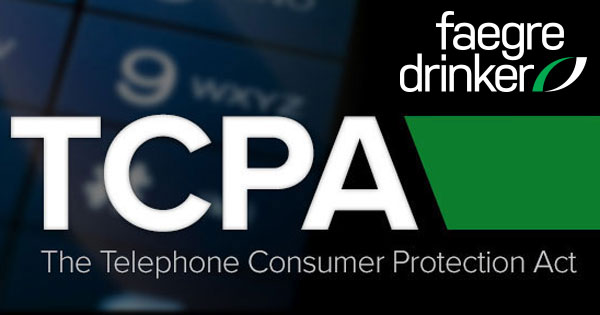In Pozo v. Stellar Recovery Collection Agency, Inc., No. 15-0929 (M.D. Fla. Sept. 2, 2016), the Middle District of Florida recently entered summary judgment against the plaintiff because it determined that an ATDS had not been used to call her.
The defendant in Pozo used a web-based dialing program called Human Call Initiator (“HCI”) to initiate the calls. HCI uses a “point-and-click” process that allows calls to be initiated by human “clicker agents.” Specifically, the program will not initiate a call until a clicker agent manually confirms in a dialogue box that the call should be made to that particular number. If a call is answered, the clicker agent then refers the call to a “closer agent” who speaks with the debtor. The program also allows clicker agents to view the availability of closer agents and will not initiate a call unless a closer agent is available. The plaintiff’s TCPA claim turned (as they often do) on whether the defendant had used an ATDS to place the call. The TCPA defines an ATDS as “equipment which has the capacity—(A) to store or produce telephone numbers to be called, using a random or sequential number generator; and (B) to dial such numbers.” 47 U.S.C. § 227(a)(1). The court relied on a string of decisions that has held that point-and-click systems are not ATDSs “because human intervention is required to initiate the calls.” See Opinion at 6-7 (citing Jenkins v. Mgage, LLC, No. 14-2791, 2016 WL 4263937, at *7 (N.D. Ga. Aug. 12, 2016); Estrella v. Ltd Fin. Services, LP, No. 14-2624, 2015 WL 6742062, at *3 (M.D. Fla. Nov. 2, 2015); Gaza v. LTD Fin. Services, L.P., No. 14-1012, 2015 WL 5009741, at *1, 4 (M.D. Fla. Aug. 24, 2015); Wilcox v. Green Tree Servicing, LLC, No. 14-1681, 2015 WL 2092671, at *5 (M.D. Fla. May 5, 2015); Modica v. Green Tree Servicing, LLC, No. 14-3308, 2015 WL 1943222, at *3 (N.D. Ill. Apr. 29, 2015); Gragg v. Orange Cab Co., Inc., 995 F. Supp. 2d 1189, 1193 (W.D. Wash. 2014). Because such systems will not place calls unless a human being manually clicks on a dialogue box to initiate each individual call, some courts have held that they should not be considered an ATDS.
The court also addressed the FCC’s July 10, 2015 Order, which stated that ATDSs “need only have the ‘capacity’ to dial random and sequential numbers, rather than the ‘present ability’ to do so,” and which interpreted “capacity” to include “potential functionalities.” The court first noted that since defendant made the calls before the release of the FCC’s July 10, 2015 Order, it was unclear if the Order had any relevance. Even if it did apply, however, the court concluded that the plaintiff had provided no evidence that the defendant could modify the dialing system to make autodialed calls. On the contrary, the plaintiff had offered purely theoretical arguments that the court rejected: “Of course, Stellar could hypothetically hire a team of programmers to modify and rewrite large portions of HCI’s code to enable HCI to make autodialed calls, eliminating clicker agents, the dashboard, and all human input. However, the fact that Stellar might be able to undertake such a pointless endeavor does not mean that HCI has the ‘capacity’ to be an autodialer or that it has the ‘potential functionality’ to be an autodialer within the meaning of the TCPA and the 2015 Order.”
The court’s decision is a welcome one because it applied the statutory definition of an ATDS and found that a dialing system that requires human intervention is not an ATDS despite the theoretical possibility of some hypothetical enhancements.

